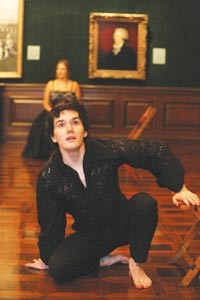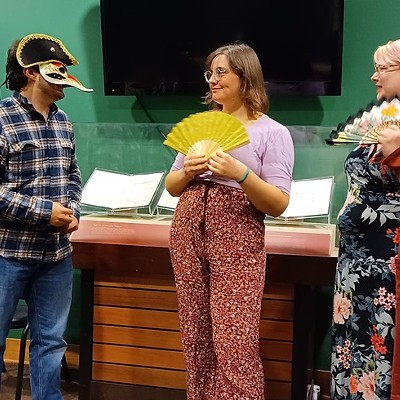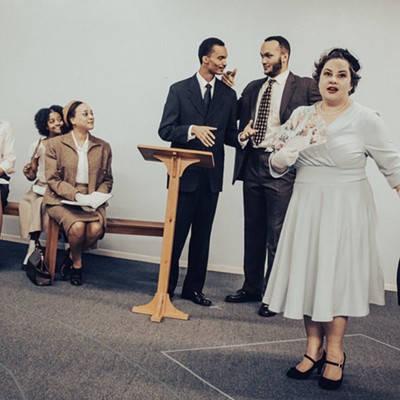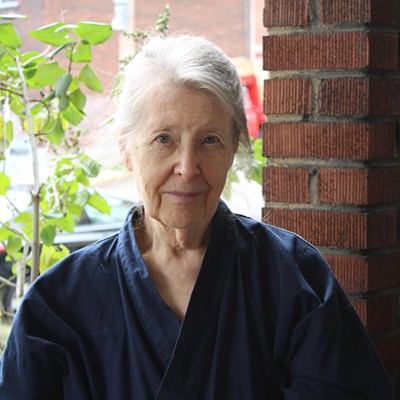Precisely 11 years ago, I was introduced to John Berger's Ways of Seeing, a slim manifesto about art theory, and I have never highlighted a book so fiercely. In only 155 pages, Ways of Seeing changed not only how I approach art, but my entire perception of the world. Berger is one of those British renaissance men who must be envied: a writer, story-teller, activist and artist who spends his twilight years in rural France. One imagines him sniffing a glass of Chateau Lafite and identifying its exact ingredients, or sketching in a field of tulips, or marveling at sculpture the rest of us perceive as ugly clumps of iron.
But in the theater, where flamboyance reigns, aesthetes can be difficult. Berger's short story "The Museum of Desire" isn't exactly plot-driven. There's a man walking through a museum, and he encounters strange things. None of the strangeness worries him, or even crimps his style. The museum is unreal, dreamy; the man spots a mysterious woman and yearns for her, but because her features shape-shift, we're not even sure what she looks like. Most of the story concerns Berger's favorite pastime -- looking at art -- the most un-theatrical activity there is.
It's some kind of miracle that Dan Jemmett, an established director in Britain, has managed to make the story three-dimensional. Quantum Theatre's stirring world-premiere production takes place in the Frick Art & Historical Center, and the Romantic paintings that adorn the walls of inlaid wood provide a perfect backdrop. Jemmett, who directed last year's The Collected Works of Billy the Kid, does not resort to gimmicks; his five performers use the slightest movements, the subtlest gestures, to communicate their curiosity and awe. The actors (Billy's John Jay, Andrew Hachey, Rick Kemp and Kristen Slaysman, plus Desiree Davis) share the roles and the telling, haunting the stage like benevolent spirits robed in black. The Museum of Desire is a Jungian movement piece, a study of minute expression; by turning a chair around, or winking once, the actors keep their audience entranced.
We can only speculate why Quantum added a second part, Flowers in the Corner, a Berger story read aloud by Jemmett himself. When Jemmett finishes, a quintet of Carnegie Mellon musicians plays some classical string-and-piano pieces. This may feel a little apologetic, like a host serving a big appetizer to make up for a small entrée; Flowers in the Corner, solemnly read on a cluttered stage, can only disappoint after Desire's magical precision. (Quantum offers two performances nightly; the second audience sees Flowers first, then Museum.) But the musicians are sublime, even for a non sequitur. My advice: Picture yourself sitting in a field of tulips, sketching.
The Museum of Desire continues through Nov. 23, Frick Art & Historical Center, 7227 Reynolds St., Point Breeze. 412-394-3353 or www.quantumtheatre.com















